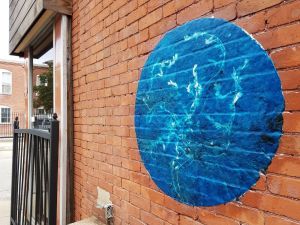Three Papermakers on How Water Shapes Their Creative Process
Advance registration is required.
This is event is being held online. After registering, connection information will be emailed to you.

Hand papermaking is an artistic discipline offered to PAFA students and to the Brodsky Center's artists-in-residence. With the advent of the Industrial Revolution in the 19th century and the papermaking machine, hand paper production all but ceased in the United States. By employing hand papermaking today, artists question this rupture in craft tradition and instead envision continuity among artistic, technological, and scientific thought processes. Contemporary papermaking artists experiment in three notable areas: engineering new forms; engaging urgent threats to the environment; and sensing color and texture through non-mainstream cultural sensibilities. In this talk, three artists highlight water usage in hand papermaking, with a historical introduction by Philadelphia artist, PAFA faculty and Brodsky Center’s collaborative papermaker Nicole Donnelly; highlights on Japanese papermaking, its approach to water conservation, and its relation to the current practice of Tatiana Ginsberg, artist and Director of Artistic Projects and Master Collaborator at Dieu Donné in New York; and understanding invasive water plants through the work of artist and papermaker May Babcock, who is based in Pawtucket, Rhode Island.
Image: May Babcock, Blackstone Watershed Papers, 2018, wheat-pasted cyanotype on artist-made paper from water chestnut (Trapa natans), Japanese knotweed (Fallopia japonica), Eurasian milfoil (Myriophyllum spicatum), cotton waste scrap, abaca, 36 inches in diameter. Image courtesy of the artist, © 2022 May Babcock.
We're so excited you're planning to visit PAFA!
Make time for art — visit us Thursday to Sunday.
Before reserving your tickets, please review helpful information about museum hours, accessibility, building access, and special admission programs.
If you have any questions, feel free to reach out to us at visitorservices@pafa.org — we’d love to help!